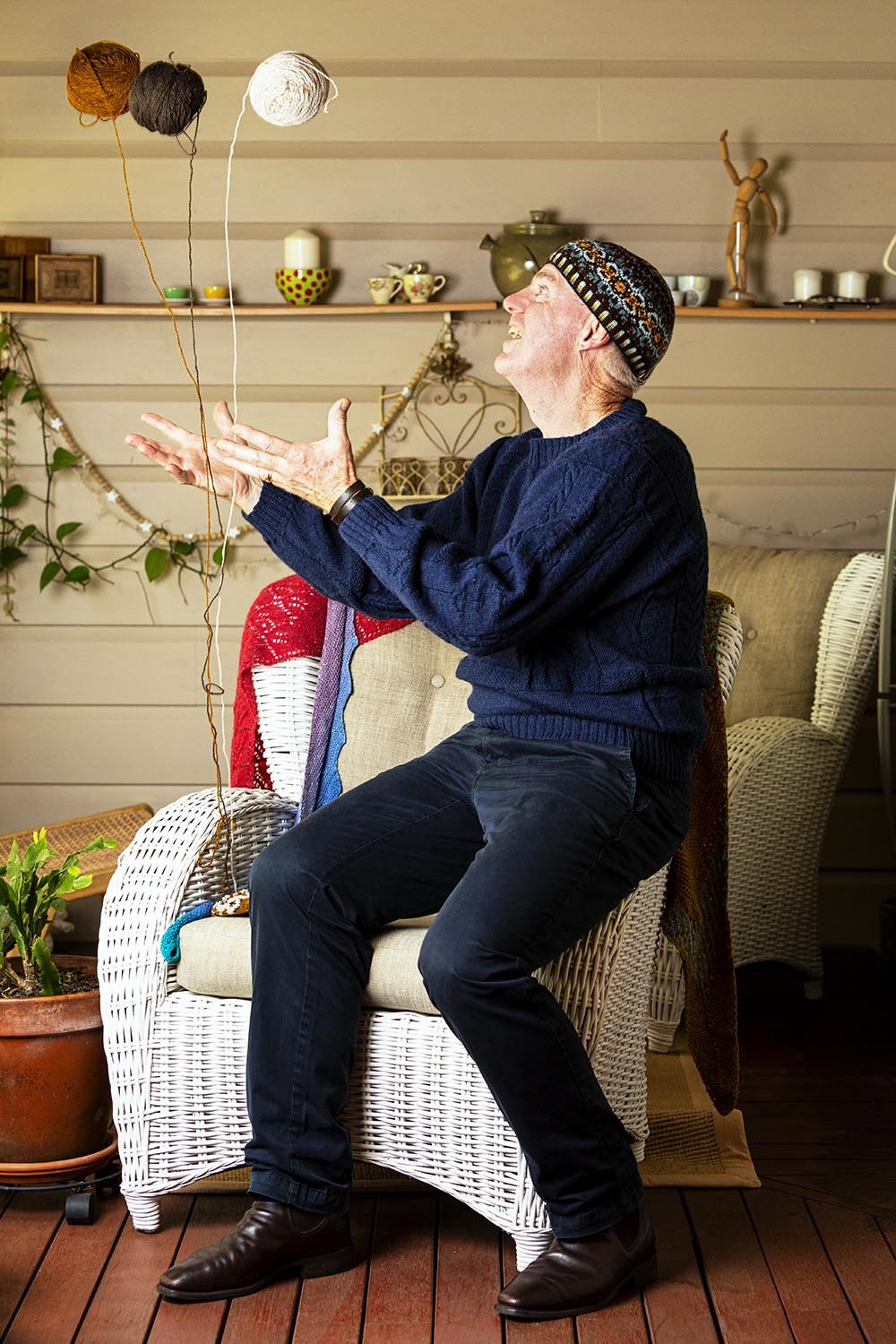Niel Wark
Navy, Photographer - Knitter
Niel lives surrounded by lush, sub-tropical gardens with the sounds of Eastern Whipbirds and parrots filling the air. His own native bees mix with dragonflies and beetles. Niel and his wife, Christine, take full advantage of their environment without a television to intrude upon these idyllic sounds. Montville, in the mountains behind the Sunshine Coast in Queensland, has been their home since his retirement from the Royal Australian Navy in 2018. They are building a natural retreat to host their two children Emma and Tom, their partners Paul and Olivia and their growing number of grandchildren.
Enlisting at just 15 at Mt Isa, Niel went to Naval College at Jervis Bay before graduating as a Seaman Officer in 1982.
Niel worked his way through the ranks from Cadet Midshipman. He recalls career highlights such as the command of two patrol boats, HMA Ships Fremantle and Ipswich and the patrol boat and hydrographic base in Cairns from 2003-2004.
After an arduous posting in tropical Cairns, Niel became the Fleet Safety Officer in Sydney. For this role he was awarded a Conspicuous Service Cross.
“That was very special to me as I took great pride from the fact that I was recognised for having contributed to keeping navy people safer at sea in the very unique work that we conduct,” recalls Niel.
Niel retired after 41 years full time service, the last as the head of Navy Safety in Canberra as an acting Captain. Upon retirement, he continued to serve as a reservist.
“People assume that, after that sort of time served, you’d have trouble retiring. But I’ve benefited by having a number of creative pursuits in my life during my transition from the navy,” says Niel.
“It’s funny. I honestly never considered myself as having a creative bone in my body. I couldn’t draw, didn’t do any painting or anything like that as a child. Towards the end of my career though, in Canberra, I began taking photos, mostly of sunrise and sunset, on my iPhone. But even now, I feel a little self-conscious in thinking of that as being creative.”
Niel’s photographic skills developed over time, and he achieved success in numerous photographic competitions. His photos are often close-ups of nature, all taken in his Australian native garden, which was handcrafted by both Niel and Christine.
“I had never gardened before we came here. I worked in great harmony with my father, who was alive then, and as we worked on creating a sanctuary for native animals, I began taking photos. I was teaching myself about plants and animals as we went along.”
Another facet of Niel’s creativity began some years before retirement. He was travelling for work and picked up a magazine that featured a book entitled The Knitting Cowboy.
“It was the biography of a man who knitted blankets for his horse with shovel handles. At the back of the article there was a pattern for a beanie. I bought some yarn and needles and thought, ‘I’ll have a go at that.’ It was basic knit/purl, knit/purl. It took me a while, but I finally had a knitted hat. I’ve never looked back.
“There are communities of knitters all over the world. I love their stories and traditions. For example, there was a woman in Northern England hosting a Podcast who talked about a yarn that comes from the St Kilda Islands, off Scotland. The last inhabitants left the islands in the early 1900s but the sheep are still there and have continued to breed and prosper. A group has permission to go annually to the island, shear the sheep and spin the yarn. I was able to procure some of the yarn before knitting up a shawl in a traditional Scottish pattern. It’s wonderful being part of such communities of people from around the world that I’ve never met.
“But I’m usually the only male in the group,” Niel adds, smiling.
His current project is called Gansey knitting.
“A Gansey is the name given to the traditional hand-knitted pullover worn by herring fishermen off the coasts of Britain and the Netherlands, particularly in the 19th and early 20th centuries,” he explains.
“It’s tight knitting in a very fine yarn, which makes it almost weatherproof. The patterns were never written down, so they are all unique and contain motifs specific to the wearer. I see it as a mathematical exercise, but I guess it’s also creative as no one else has ever done this exact pattern before.”
The Australian National Veterans Arts Museum (ANVAM) contacted Niel through social media and shared an original Red Cross pattern with him that was used by women in Australia to provide warm, dry socks for the men at the frontline during World War I. Over 100,000 pairs were sent to ‘cover the feet of the men that have made Australia famous throughout the world’. (Red Cross pamphlet Blue Ribbons to Balaclavas 1916).
Niel sourced a fine yarn that was, ironically, made in Germany and knitted a complete pair of socks on circular needles from the original Red Cross pattern. While doing so, he discovered a small error in the pattern.
“It’s a minor mistake but that line of decrease that it creates after the heel is knitted is very important to the look of the sock,” he says.
Niel’s socks would certainly not have warranted the tongue-in-cheek poem that was printed in the Kilmore Advertiser on 22 September 1917.
Received your socks and they are ‘some’ fit
Am wearing one as a helmet
And the other as a mitt
Am glad to learn you are doing your bit
But who the dickens taught you to knit.




